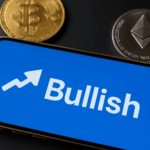
Introduction
A Bitcoin whale has shocked the crypto market by moving 1,000 BTC—worth over $116 million—after being dormant for 12 years. This massive transfer came just hours before the Federal Reserve’s interest rate decision, creating intense speculation about whether the whale intends to sell or simply reposition funds. The timing, scale, and context of this transfer could have major implications for the crypto market impact in the short term.
- Introduction
- What Is a Bitcoin Whale?
- Key Facts About the 1,000 BTC Whale Transfer
- Why the Timing Matters
- Technical and On-Chain Analysis
- Historical Whale Movements
- Possible Scenarios
- Scenario 1: Exchange Deposit and Sale
- Scenario 2: Custody Reorganization
- Scenario 3: OTC (Over-the-Counter) Deal
- Market Impact and Sentiment
- How Traders Should Approach This
- Conclusion
What Is a Bitcoin Whale?
Before diving into the details, let’s clarify: a Bitcoin whale is an entity or individual holding large amounts of BTC, typically enough to influence markets if moved. Dormant whales—wallets untouched for years—often attract headlines when they suddenly become active.
Key Facts About the 1,000 BTC Whale Transfer
- Amount moved: 1,000 BTC (~$116M at current prices)
- Dormancy period: Last active around 2013–2014
- Original cost basis: Estimated below $1,000 per BTC
- Timing: Hours before the U.S. Fed’s interest rate meeting
- Destination: Split into multiple addresses, not directly spotted on major exchanges (yet)
Why the Timing Matters
The transfer coincided with heightened global attention on the Fed rate decision. Such macroeconomic events directly influence investor risk appetite:
- If Fed turns dovish: More liquidity could push risk assets, including BTC, higher.
- If Fed turns hawkish: Tightening policy may pressure BTC, encouraging profit-taking.
The whale’s movement before this decision raises the question: was this a pre-sell setup or just a custodial reorganization?
Technical and On-Chain Analysis
Technical Chart Insights
- BTC support: Around $116,000 remains the key psychological level.
- BTC resistance: Near-term resistance sits between $115,000–$116,000.
- Indicators: RSI hovers near neutral, showing market indecision before Fed news.
On-Chain Analysis
- Exchange inflows: No immediate spike yet, meaning the BTC may not be on exchanges.
- Dormant supply movement: Reactivating coins this old is rare, and historically, such moves often spark short-term volatility.
- Realized profit: If sold, profit would exceed 100x the initial investment.
Historical Whale Movements
Past cases of dormant whales moving large amounts of BTC show mixed outcomes:
| Year | BTC Moved | Market Reaction | Outcome |
|---|---|---|---|
| 2020 | 50 BTC (Satoshi-era) | Panic sell-off | Price recovered quickly |
| 2021 | 1,000+ BTC | Short-term dip | Long-term bullish trend resumed |
| 2023 | 2,100 BTC | Market hesitated | Sideways movement, no crash |
| 2025 | 1,000 BTC (current) | Awaiting Fed clarity | TBD |
Possible Scenarios
Scenario 1: Exchange Deposit and Sale
- Whale prepares to take profit ahead of volatility.
- Could lead to short-term BTC price dip.
Scenario 2: Custody Reorganization
- Moving funds to new wallets, hardware devices, or multisig setups.
- No immediate price impact expected.
Scenario 3: OTC (Over-the-Counter) Deal
- If coins are sold through private deals, impact on price charts will be minimal.
Market Impact and Sentiment
Even without exchange deposits, this whale move generates fear and speculation:
- Traders may hedge positions.
- Derivatives markets could see increased volatility.
- Altcoins often react strongly to Bitcoin uncertainty.
How Traders Should Approach This
- Short-term traders: Watch exchange inflows closely. If coins hit Binance, Coinbase, or Kraken, selling pressure is likely.
- Medium-term investors: Stay calm. Whale moves are often exaggerated events unless followed by heavy exchange flows.
- Options strategies: Rising implied volatility around the Fed meeting makes hedging with puts attractive.
Conclusion
The awakening of a Bitcoin whale moving 1,000 BTC after 12 years just before the Fed rate decision is a powerful reminder of how old capital can re-enter the market unexpectedly. While the actual impact depends on whether the coins hit exchanges, the psychological effect is undeniable. Combined with macro uncertainty, this event could add fuel to short-term volatility.
Not financial advice.





